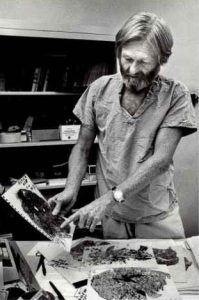 e-WV: The West Virginia Encyclopedia at www.wvencyclopedia.org.
e-WV: The West Virginia Encyclopedia at www.wvencyclopedia.org.
Feb. 21, 1895: Bluefield Colored Institute was established by the legislature to prepare Black West Virginians for the teaching profession. After several name changes, the school became Bluefield State College in 1943 and achieved university status in 2022.

Feb. 21, 1913: Workers’ compensation passed the legislature, modeled on the German system Governor Hatfield had studied in the Ruhr Valley coalfields.
Feb. 21, 1940: Former Governor Gaston Caperton was born in Charleston. In 1988, Caperton defeated Arch Moore to become the state’s 31st governor.
Feb. 22, 1927: Longtime Agriculture Commissioner Gus R. Douglass was born in Mason County. Douglass, a Democrat, was first elected commissioner in 1964. Reelected nine times, Douglass was the longest serving agricultural commissioner in the country.
Feb. 22, 2018: 33,000 schoolteachers and service personnel walked off the job over wages and health benefits. The strike drew national attention, and teachers in five other states organized work stoppages.
Feb. 23, 1867: Lincoln County was formed from Boone, Cabell, Kanawha and Putnam counties. The county was named for Abraham Lincoln.
Feb. 23, 1905: The first USS West Virginia was commissioned. The armored cruiser was renamed the USS Huntington in 1916 to allow the transfer of the original name to a newly authorized battleship.
Feb. 23, 1945: Harrison County native “Woody” Williams distinguished himself during the Battle of Iwo Jima by neutralizing seven concrete pillboxes. This act of heroism earned Williams the Medal of Honor.
Feb. 24, 1918: Judge Kenneth Keller “K. K.” Hall was born at Greenview, Boone County. Hall spent 47 years on the state and federal benches.
Feb. 24, 1928: Doctor Donald L. Rasmussen was born in Colorado. After coming to work at Miners Memorial Hospital in Beckley, he became a driving force in the passage of state and federal black lung legislation.
Feb. 25, 1903: An armed posse ambushed striking miners in their homes in the village of Stanaford near Beckley. Six miners were killed; federal judge B. F. Keller exonerated the posse.
Feb. 25, 1911: Newspaperman Jim Comstock was born in Richwood. In 1957, he founded the West Virginia Hillbilly, a weekly newspaper that circulated inside and outside the state.
Feb. 26, 1869: The legislature approved a bill moving the state capital to Charleston.
Feb. 26, 1972: One of the country’s worst mining-related disasters occurred on Buffalo Creek in Logan County. A coal waste dam collapsed, sending 132 million gallons of water, coal refuse and silt into the valley. In the end, 125 people, including entire families, were killed, and 1,000 people were injured.
Feb. 27, 1867: Marshall College (now university) was established as a normal school for the training of teachers. The first term began June 15, 1868, with 25 students enrolled in three departments.
Feb. 27, 1871: Summers County was established from segments of Fayette, Greenbrier, Mercer, and Monroe counties. The county was named after George W. Summers, one of West Virginia’s founders.
Feb. 27, 1871: The West Virginia Legislature approved an act incorporating the city of Huntington.


